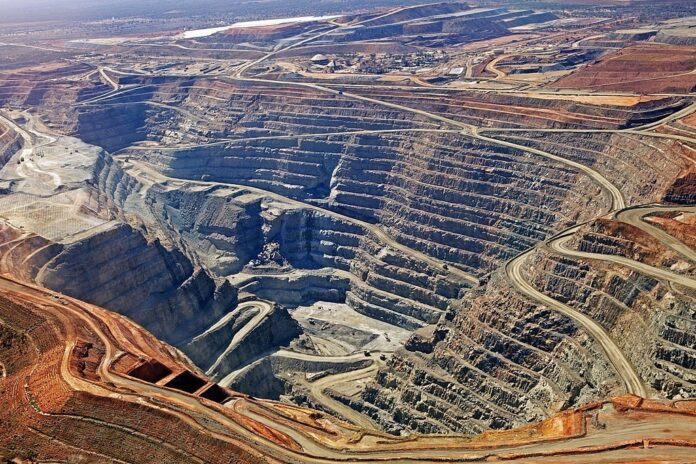Scotiabank bullish on zinc, copper

Demand and prices for virtually all industrial materials and commodities – from lumber and copper to oil and agricultural products – made for strong gains in 2017, and “synchronized” global economic growth promises to continue pushing prices up throughout 2018 and 2019, according to Scotiabank Economics.
“Scotiabank Economics is forecasting, for the first time since the global financial crisis, that all major developed and emerging markets are all growing … this year and next, which provides tremendous tailwinds to the industrial commodities space, particularly on the base metals side,” said Scotiabank commodities analyst Rory Johnston.
Unlike the last supercycle, where China’s economy grew at tremendous rates while other major economics, like Europe, had tepid growth, global economic growth is now more “synchronized,” Johnston said.
Scotiabank’s January commodity price index is good news for resource sectors. B.C.’s key commodities – lumber, metallurgical coal, copper and agricultural products – continue to experience higher prices.
Manufacturing growth globally is driving up the demand and price for base metals for home appliances and electronics. Meanwhile a “feverish sentiment” for electric vehicles is pushing up prices for nickel, copper and cobalt.
“Of all the metals, copper – or Doctor Copper, as many people like to call it because of its connection with the global industrial cycle – it really has benefitted the most of any of the commodities in terms of the sentiment gains that copper has accrued,” Johnston said.
He thinks speculation has inflated the price somewhat, but over the longer term expects it to have the strongest fundamentals of all the metals over the next five years.
He forecasts copper prices to be in the $3 and $3.25 per-pound range in 2018 and 2019, respectively, which is good news for the owners of both operating and idle copper mines in B.C.
As has been predicted for some time now, zinc continues to be the hottest metal of all, reaching 10-year highs. Scotiabank is predicting zinc prices to be in the $1.60 per pound range throughout 2018 and 2019. High zinc prices are partly responsible for the planned restart of the Myra Falls metals mine on Vancouver Island.
Metallurgical coal – used to make steel and one of B.C.’s most abundant exports – has reached highs $258 per tonne, but are expected to fall to about $170 per tonne in 2018 and $150 per tonne in 2019.
Year-over-year, from December 2016 to 2017, prices for lumber grew a whopping 23.2%. Prices for agriculture were up 9.5%, and metals and minerals were up 7.3%.
“We continue to see robust growth in U.S. housing starts, and that appears to be a trend that’s going to continue over the next couple of years,” Johnston said.
The one other key commodity for B.C., natural gas, remains flat, thanks to an abundance of it in North America. Gold, another commodity mined in B.C., also appears to be stalled – in the $1,300 per ounce range.
As for oil, prices have reached a three-year high – about $62 per barrel for West Texas Intermediate (WTI) – but Alberta’s Western Canadian Select (WCS) continues to be steeply discounted, due largely to a lack of pipeline capacity. The only non-OPEC oil producing region that is realizing major gains is the American shale oil and gas sector.
The price spread between WTI and WCS hit $27 per barrel recently, partly due to a two-week shutdown of the Keystone pipeline, after an oil spill.
But even after that spike smooths out, Alberta oil is expected to sell for about $18 per barrel less than WTI, due largely to pipeline constraints. WTI is likewise discounted against North Sea Brent Blend – again due to pipeline constraints.
A one-year delay on the completion of the Trans Mountain pipeline, with a new in-service date now set at December 2020, means that Canada’s oil sector, while experiencing some growth, continues to lose billions annually due to a lack of pipeline capacity.
“It (Alberta’s oil sector) is definitely going to be constrained by pipeline capacity,” Johnston said. “However, we do see realized Albertan crude prices rising over the next two years.”
Johnston expects a $6 to $8 increase per barrel for Alberta oil over the next year, thanks in part to new crude-by-rail offtake agreements.
More News
Barrick eyes 30% production growth by 2030
The company is also considering changing its name from Barrick Gold to Barrick Mining to reflect its changing production profile, chairman John Thornton said.
April 04, 2025 | 03:26 pm
Trump, tariffs and tin
Only one metal has escaped the tariff tsunami.
April 04, 2025 | 01:44 pm
{{ commodity.name }}
{{ post.title }}
{{ post.excerpt }}
{{ post.date }}



Comments